




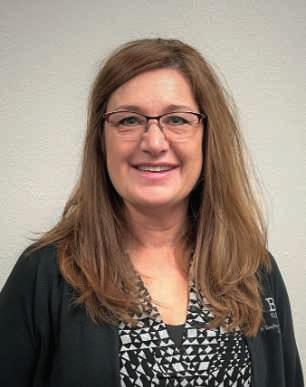 Stephanie Horst horst@byelectric.com
Stephanie Horst horst@byelectric.com
Consumers with water, gas and electricity connections have long been targets for utility scams. But in today’s digital world, every swipe and click increases the risk of potential scams.
Scammers are more sophisticated than ever before, and they understand our increasing reliance on technology. With their sharpened digital knives, scammers have adapted their tactics to trick unsuspecting consumers through a variety of methods.
B-Y Electric wants to help you avoid energy scams, whether a financial loss or leak of your personal information. This month, I’d like to share updates on some the latest utility scams, as well as tips to help you stay safe from even the craftiest scammers.
Scammers typically disguise themselves––either physically or digitally––as utility employees or representatives to steal consumers’ money or personal information. A common trick is to claim a consumer’s bill is past due and threaten to disconnect service if payment isn’t received immediately. Scammers approach consumers through a variety of means, including phone calls, text messages, emails and even in-person visits. However, the digital line of attack is increasingly more common.
For example, new capabilities disguising caller ID or “spoofing” can make the phone number you see on caller ID appear to be from a trusted source. Spoofing makes it easier for scammers to deceive you because it’s more difficult to immediately verify the call. Another recent scam uses fraudulent websites that are identical to a utility payment web page––and what’s worse, these pages are often promoted on search engines to trick consumers into clicking and making a payment.
Another recent scam involves phone calls, text messages or emails claiming you overpaid your electric bill and will receive a cash or banking refund. This offer may seem too good to be true, and it is––it’s likely a scam aimed to steal your personal information.
There are several red flags you can watch for to identify an energy scam. Scammers often use high-pressure tactics to create a sense of urgency, like claiming your electricity or other services will be disconnected if a payment isn’t made immediately.
Additionally, scammers may ask for unusual payment methods such as gift cards or cryptocurrency. If someone is pushing for an unusual payment method, it’s likely a scam.
You’ve probably noticed that many digital scams, like emails or text messages, include poor grammar, spelling errors and odd email addresses. These are red flags, so when you see these dodgy forms of communication, consider it a potential scam.
B-Y Electric will never demand an instant, immediate payment and threaten to disconnect your service without prior notices or warnings. We strive to resolve challenging situations and work with our members to avoid disconnects.
B-Y Electric will never ask for your Social Security number or banking details over the phone or through email. We offer several secure payment options, including in-person, our website, scheduled payments with ACH or Credit Card, and our Smart Hub app. Avoiding Scams
Whether in-person, over the phone or online, always be suspicious of an unknown individual claiming to be a B-Y Electric employee requesting banking or other personal information. We will only send you text messages if you have opted in for important alerts like outage information from your Smart Hub account. If you’re ever in doubt about a potential energy scam, just give us a quick call at 605-463-2507 so we can assist. B-Y Electric wants to help protect you and our community against utility frauds, and by notifying us about potential scams, you can create the first line of defense. We encourage you to report any potential scams so we can spread the word and prevent others in our community from falling victim.
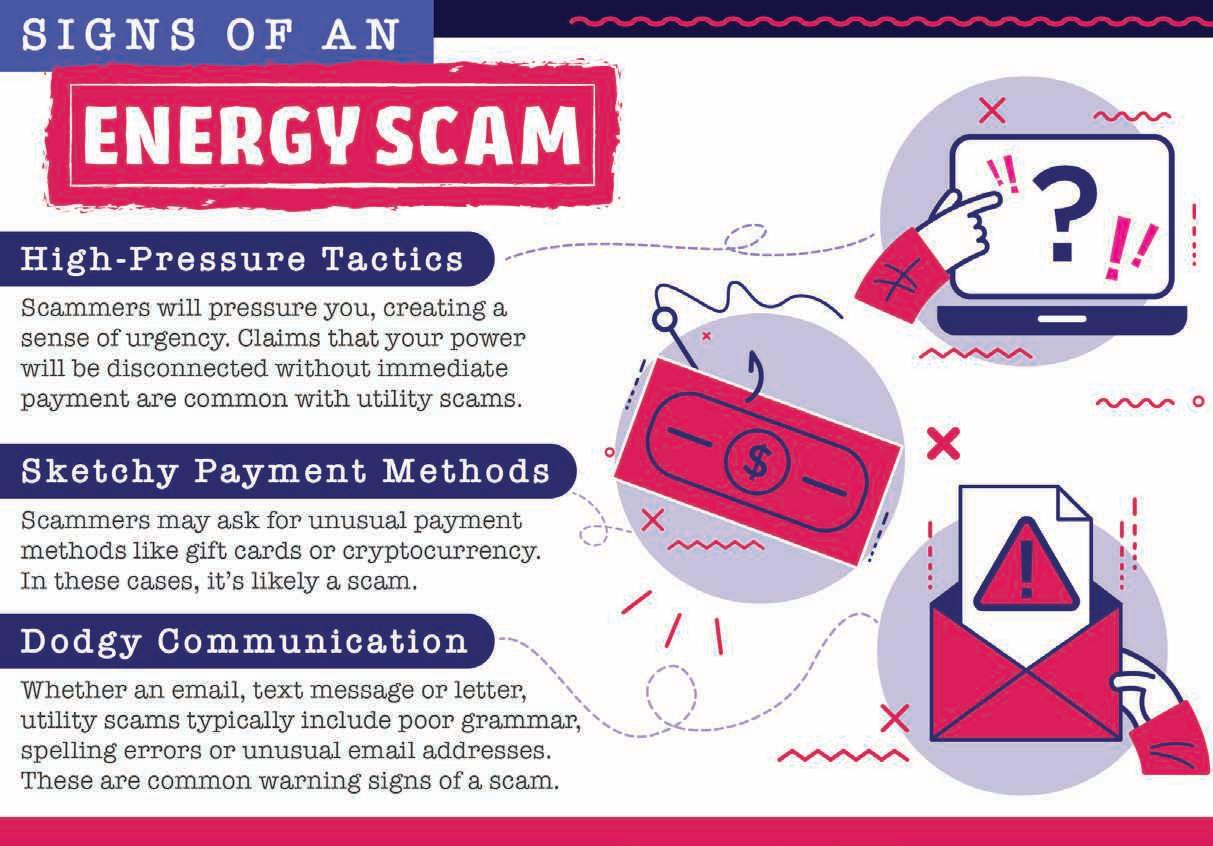
(USPS No. 018-973)
Bon Homme Yankton Electric Association, Inc PO Box 158 134 S. Lidice St. Tabor, SD 57063
Office Hours: Monday through Friday 7:30am - 4:00pm
To pay by phone, call: 1-888-395-5315
To report an outage, call: Local call from Tabor, Tyndall, and Yankton: 605-463-2507
NOTICE: Electric bills must be paid by 10:00am on the 20th of each month to avoid a $10 late fee.
Board President: Paul Voigt
Board of Directors
Dave Sykora - Vice President
Dave Sternhagen - Secretary
Robert Ruppelt - Treasurer
Dean Sternhagen
John Lillevold
Rick Cheloha
General Manager: Stephanie Horst Operations Manager: Ken Carda
Office Manager: Nicole Einrem
Members Service Advisor: Aaron Melichar Editor: Chantelle Jungemann
Bon Homme Yankton Electric Cooperative Connections is the monthly publication for the members of Bon Homme Yankton Electric Association, Inc, PO Box 158, 134 S. Lidice St., Tabor, SD 57063-0158. Families subscribe to Cooperative Connections as part of their electric cooperative membership. The purpose of Bon Homme Yankton Electric Cooperative Connections is to provide reliable, helpful information to electric cooperative members on electric cooperative matters and better rural living. Subscription information: Cooperative members devote 50 cents from their monthly electric payments for a subscription. Non-member subscriptions are available for $12 annually. Periodicals postage paid at Tabor, SD 57063.
Postmaster: Please send address changes to Bon Homme Yankton Electric Cooperative Connections, PO Box 158, Tabor, SD 57063; telephone (605) 463-2507. Tabor, SD 57063; telephone (605) 463-2507. This institution is an equal opportunity provider and employer.

The April board meeting was held on April 17, 2024 at 8:03 am. Directors personally present were Dave Sternhagen, Dave Sykora, Dean Sternhagen, Robert Ruppelt, Rick Cheloha, John Lillevold and Paul Voigt. Others present were the attorney, management staff and guest employee.
THE BOARD APPROVED THE CONSENT AGENDA:
• March 2024 Board Meeting minutes
• Review New Members & Cancellations
• Two Capital Credits to Estates$3,139.89
• Closed Work Order Inventory - #911 for $239,757.97
• Review Special Equipment Purchases$72,395.47 9 (six 3-ph pad transformer)
THE BOARD REVIEWED AND ACCEPTED FOLLOWING REPORTS:
• Member Service Report
• Operations & Safety Report
• Office & Financial Reports
• East River Cyber Security/IT Report
• General Manager Report
East River GM Report
Power Bill
Basin March Financials
• SDREA Report
• East River Report
• NRECA Annual Meeting
• Legal Report
OTHER GOVERNANCE
• Audit Presentation- results of the 2023 audit.
• Enter/Exit Executive Session
• REED Loan consideration for Meridian Holdings.
• Next Meeting date set for Wednesday May 22, 2024, at 8:00 am.

In only a matter of minutes, a small house fire can rage out of control, reaching temperatures of up to 1,500°F. In most cases, you have one to two minutes to get out safely.
We practice fire emergency drills at work and school, but don’t forget to create and practice a home escape plan, as well. It is beneficial to keep your plan visible, like on the refrigerator, to help family and visitors remember what to do. The Federal Emergency Management Agency (FEMA) stresses that even children as young as three years old can understand an escape plan.
Helpful Planning Tips:
• Plan for two ways to escape from each room.
• Pick a meeting location away from your home.
• Plan for everyone in your home, including babies and others who may need help to escape.
• Teach children not to hide during a fire; they must get out and stay out.

• Practice your escape drill with everyone in your family at least twice a year.
Ways to Stay Safe:
• Clear toys, furniture and other clutter from exits.
• Check that windows open easily – fix any that stick.
• Test the batteries in your smoke alarms monthly.
• Be sure that security bars on doors and windows have a quick-release latch, and everyone knows how to open them.
• If you live in a multi-story apartment building, map out as many escape routes as possible to get to the stairways on your floor.
• If you live in a high-rise, plan to use the stairs – never the elevator – to escape a fire.
• A secondary route might be a window onto an adjacent roof or a collapsible ladder for escape from upper-story windows – purchase only collapsible ladders evaluated by a nationally recognized laboratory, such as Underwriters Laboratory (UL).
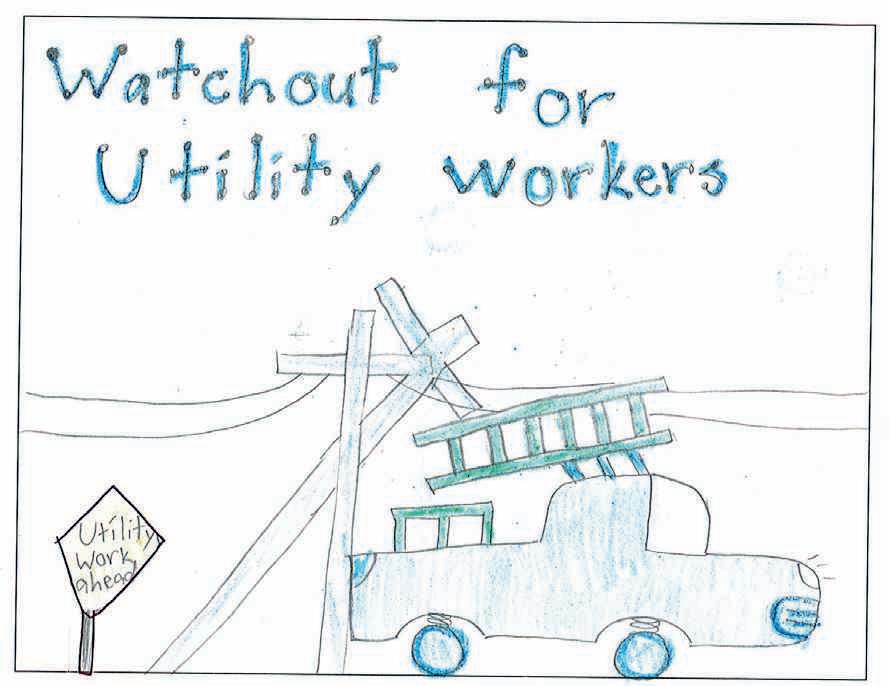
Reese Rindels cautions readers to watch out for utility workers. Reese’s parents are Rochelle and Kyle Rindels, members of Sioux Valley Energy.
Kids, send your drawing with an electrical safety tip to your local electric cooperative (address found on Page 3). If your poster is published, you’ll receive a prize. All entries must include your name, age, mailing address and the names of your parents. Colored drawings are encouraged.

CHOCOLATE FUDGE FROSTING
Ingredients:
2 1/4 cups confectioners’ sugar
1/4 cup unsweetened cocoa powder
1/4 tsp. cinnamon
6 oz. (3/4 package) cream cheese, softened
3/4 cup (1 1/2 sticks) butter, softened
8 oz. semi-sweet chocolate, melted and cooled slightly 1 tbsp. pure vanilla extract
Method
Mix sugar, cocoa powder and cinnamon in medium bowl until well blended. Set aside. Beat cream cheese and butter in large bowl with electric mixer on medium speed until smooth. Gradually beat in cocoa mixture on low speed until well blended. Gradually beat in melted chocolate then vanilla until well blended.
McCormick.com
RED VELVET HOT CHOCOLATE
Ingredients:
4 cups whole milk
1/4 cup sugar
10 oz. semi-sweet baking chocolate, coarsely chopped
2 tsps. red food color
1 tsp. pure vanilla extract
Vanilla Whipped Cream
1/2 cup heavy cream
2 tbsps. confectioners’ sugar
1/2 tsp. pure vanilla extract
Method
Place milk and granulated sugar in medium saucepan. While stiring, bring to simmer on medium heat. Remove from heat. Stir in chocolate with wire whisk until melted. Stir in food color and vanilla. Serve with marshmallows.
For the vanilla whipped cream, beat heavy cream, confectioners’ sugar and vanilla in medium bowl with electric mixer on high speed until stiff peaks form.
McCormick.com
LEMON PUDDING DESSERT
Ingredients:
1 cup COLD butter
1 8 oz. pkg. cream cheese, softened
1 8 oz. tub cool whip, divided
2 pkgs. (small) instant lemon pudding
2 cups flour
1 cup powdered sugar
3 cups COLD milk
Method
In bowl, cut butter into flour until crumbly. Press into an ungreased 9 x 13 inch glass pan. Bake at 350 degrees for 18 to 22 minutes or until set. Cool on wire rack. In mixing bowl, beat cream cheese and powdered sugar until smooth. Fold in one cup cool whip. Spread over cooled crust. In bowl, beat milk and pudding mixes on low speed for 2 minutes. Carefully spread over cream cheese layer. Top with remaining cool whip. Refrigerate for at least 1 hour or more. Yields 12 to 16 servings.
Mary Jessen Holabird, S.D.
Please send your favorite recipes to your local electric cooperative (address found on Page 3). Each recipe printed will be entered into a drawing for a prize in December 2024. All entries must include your name, mailing address, phone number and cooperative name.

We are thrilled to announce Gentle Spirit Horses Rescue as a Who Powers You Contest finalist! Your passion for making a positive impact in your community is truly admirable and we commend your efforts! Congratulations.
Tiffany & Nina Ring with Gentle Spirit Horses Rescue, from Scotland SD, were nominated for the Touchstone Energy Who Powers You contest.
Tiffany and Nina run Gentle Spirit Horses Rescue, while also holding down full time jobs. Tiffany and Nina have huge impact on equines in South Dakota and their owners. They have rescued countless horses from terrible situations and provide a safe landing for horses whose owners love them dearly but are going through hard times or life changing events. They also have a well-loved herd of permanent residents with various disabilities. They engage in their community and teach children about caring for animals
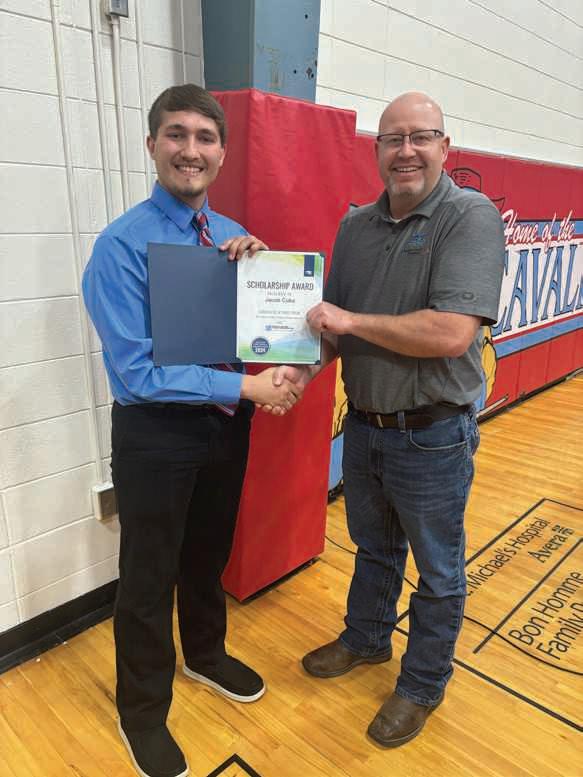

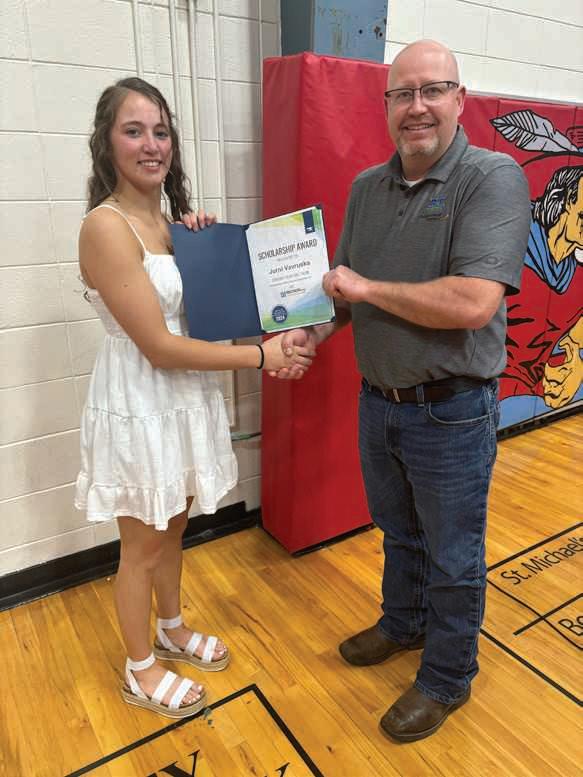

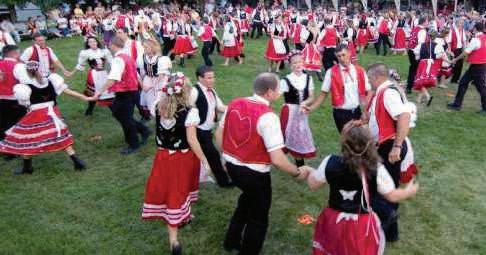




Tabor, South Dakota
Friday and Saturday
June 14th and 15th, 2024
The celebration has kept alive the heritage of the early founders of the little South Dakota community who came to Tabor from Czechoslovakia as early as 1869. What started out to be a small community celebration has grown into an attraction that draws literally thousands of people each year.
Disc golf, a sport increasingly capturing the interest of new amateurs and enthusiasts nationwide, is embedding itself in the rolling landscapes of South Dakota. Parks across the state have been developing disc golf courses, erecting chain link baskets and inviting locals to let their discs soar through the countryside.
Alongside these courses, an entire industry has emerged, complete with high-stakes tournaments, live broadcast coverage, and a class of professional players who have elevated their disc golf game to new heights. At the forefront of this scene is Ezra Aderhold, a native of Bath, S.D., whose passion for disc golf has led to a full-time career in the sport with seven career wins and career earnings totaling more than $100,000.
Aderhold’s journey from an amateur player to a professional disc golfer, however, did not happen overnight. Without any tournament experience or a single dollar earned from the sport, Aderhold set a goal to become one of the world’s best disc golfers.
“My brothers and I started watching the pro disc golf scene from the couch,” Aderhold recounted. “I was a bit delusional, thinking I could immediately compete with the pros. I thought I was better than I was, which, granted, wasn’t a complete delusion because I am one of the top pros now; but at the time, that mindset fueled my confidence to make it happen.”
With a headstrong mindset, Aderhold set out to achieve his audacious goal. In 2017, Aderhold began treating disc golf as a full-time job, practicing daily. After picking up a few wins in local tournaments, Aderhold kicked off his first tour in the professional disc golf scene in 2019 by driving to a tournament in Texas, where he lived out of his car to sustain his dream.
“When I went on tour my first year, I just lived out of my Toyota Prius, so I built it out with my bed in there. I would go to local parks to plug in my Instant Pot and cook my beans,” Aderhold laughed. “I wanted to live as cheaply as possible so I could stay out on the road and keep the tour going. At the time, I was so focused on making that dream a reality that it didn’t feel like a sacrifice. I was just so happy to have a chance to be out there, trying to make it in the pro disc golf scene.”
Eventually, the days spent living out of his Prius palace paid off, and after months of living on the road, Aderhold’s career began gaining traction. While in Texas, Aderhold earned his

first small sponsorship from OTB Discs, a disc golf retailer. As his wins started to compile, so did the offers from sponsors. By the end of his second season in 2020, Aderhold had offers on the table from multiple sponsors. Today, Aderhold holds sponsorships with several disc golf companies, including Squatch Disc Golf, OTB Discs and Discraft.
“Once I landed a sponsorship with Discraft, that’s when it really became sustainable for me,” he said.
In April, Aderhold again proved his determination in Arkansas at the Jonesboro Open. In the same week the moon covered the sun during the total solar eclipse, Aderhold took second place in the tournament, throwing 23 under par. Although the stars aligned that week, Aderhold was just one throw shy of taking home the win.
“I am definitely disappointed that I didn’t take home the win – that’s the goal; but I’m happy with how I am playing and I know that at the level I’m playing at now, a win is inevitable,” Aderhold said.
A firmly established professional disc golfer, Aderhold said his next goal is to join the ranks of the top disc golf players in the world.
“Back in the day there were four players that always had a chance at winning and always played at the top of their game,” said Aderhold. “Obviously, I want to win, but I think the bigger goal is to be one of the top guys who is always in contention for the win.”

Shannon Marvel shannon.marvel@sdrea.coop
Soukup Homestead: Raising families and farmers for over 125 years
Nestled in the heart of southcentral South Dakota lies a cherished piece of land with a name that’s been long-established in Charles Mix County – the Soukup Homestead.
Almost anyone with Wagner ties knows a Soukup.
There are even a few members of the Soukup family who are also part of South Dakota’s rural electric cooperative family, including Charles Mix Electric District 1 Director Denise Soukup. But it all had to start somewhere, and good things take time.
That was the case for the Soukup’s Century Farm and the Gronseth/Fiegel/Nelson/Evans homestead, a farm located near Britton that’s served by Lake Region Electric.
Really, it’s a common theme for Century Farm families to be located within rural electric cooperative service areas.
The South Dakota Farm Bureau and the South Dakota Department of Agriculture and Natural Resources began the Century Farm Program in 1984 to recognize farm and ranch families who have kept the farm in the family for 100 years or more.
Farms reaching the milestone of 125 years, known as
Quasquicentennial Farms, and the venerable Sesquicentennial Farms, marking an impressive 150 years, are also given their due recognition.
With over 3,000 families honored to date, the program continues to shine a light on the enduring legacy of South Dakota’s agricultural heritage. To qualify for these prestigious honors, farms must encompass at least 80 acres and provide documented proof of their original purchase date. That means a family member must have always had ownership of the land over the last 100 years, including during the Great Depression and Dust Bowl.
The annual award presentation is a cherished tradition held at the South Dakota State Fair.
After migrating with family from what is now known today as the Czech Republic in the late 1800s, Joseph and Mary Soukup
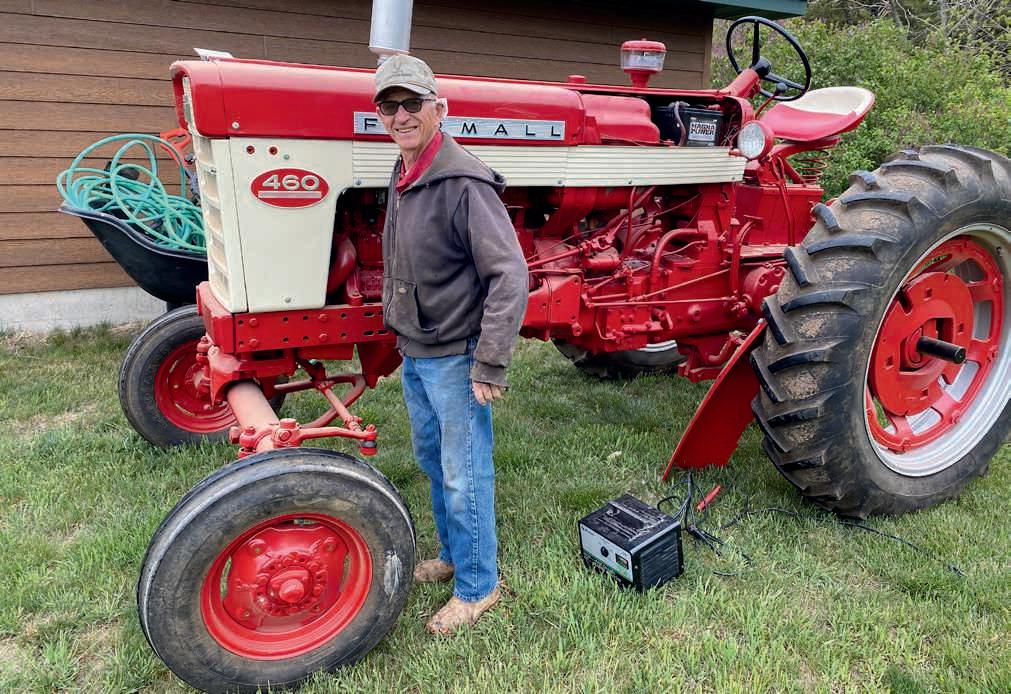
came to the Dakota Territory at a time when most of the land open for settlement had already been settled.
While living in Tabor with family, Joseph Soukup applied for a homestead on reservation land that was now open for settlement at the U.S. Land Office in town of Mitchell on Jan. 30, 1896.
“In the following five years he built a frame house 13 feet by 18 feet in order to establish a residence, then a grainery, a corn crib, and he also fenced in 80 acres,” said Linda Soukup, the wife of Tom Soukup. Her husband is Joseph and Mary’s grandson.
Joseph and Mary raised ten children on the very homestead that Tom and Linda raised their kids.
“There’s a lot of pride in the heritage and the legacy of, you know, having it passed down,” Linda said. A new house was built on the site of Joseph and Mary’s original home’s structure in 1952.
That’s where Tom and Linda lived and became the third generation to live on the homestead.
“When we lived here and Tom’s parents and their brothers and sisters used to all come here,” Linda said, as she started walking towards one of the farm buildings on the property referred to as “the shed.”
“And they would butcher hogs and cattle and we would process them down there. We had a meat cooler in the basement. And then one of the families owned the meat saw and one owned the sausage stuffer,” she recalled. “That was always kind of what we did until, well, families got bigger, and you couldn’t. You just couldn’t keep up, you know? We could have had a critter in there all the time,” she said.
Tom and Linda raised their children –Becky, David, Kathy and Mary – in the house as well.
Their son David works as a project engineer for Phillips Petroleum in Texas. Two of their daughters live in different towns but remain relatively close to the homestead.
Kathy Jaeger lives in Tyndall and Mary Ringling lives in Platte. In 1996, their daughter Becky and her husband, Mike
Brunsing were living in Montana when Tom and Linda decided to move into town, so in 1998 the Brunsings moved back to South Dakota and began helping Tom on the farm while living in the house.
Becky raised three children of her own in the house she grew up in herself.
Becky and Mike still live on the homestead but in a more recently built home.
Now her son Dylan, 28, is raising his own family in the 1952 farmhouse.
In doing so, he became the fifth generation on the homestead.
Dylan and his wife, Keely, have two sons – a 20-month-old and an infant born in late March.
After 126 years, Torger Gronseth’s homestead continues to bring family together.
It’s hard for Carol Evans to put into words how she feels when she reflects on the 126 years of history of her family’s farm in Marshall County.
“It’s so important to us,” Evans said. Then she takes pause.
“I’m sorry, it’s emotional for me,” she says, before telling her family’s – and the farm’s – origin story.
In 1872, her great grandfather, Torger Gronseth, immigrated to America from Norway at only 14 years old.
He made the trip to join his eldest brother in Minnesota. He officially “staked his claim” and homesteaded in the Pleasant Valley Township of Marshall County in 1901.
Over the next two decades, Torger and his wife, Berthe Lea, amassed over 960 acres of undeveloped land in the Coteau de Prairie of northeastern South Dakota.
To each of their six children, Torger bequeathed a quarter of land.
The pioneering couple sold a quarter to their daughter, Louise, upon her marriage to George Fiegel for $1.
While they were building the house that Carol and Frank Evans now call home, the Fiegels welcomed their first child.
“All of them were born in that house built in 1920. The first born was born on
the actual homestead. The house was being built when my first aunt was born,” Evans said.
Louise and George owned the house and quarter of land until 1972, at which point ownership was passed onto their daughter Joyce and her husband Orvin Nelson.
“We bought the house in 2011. Last year after my mom passed, we were able to buy the entire quarter,” she recalled.
Carol and Frank then got to work refurbishing the 800-square-foot house.
The Evans live in Arizona in the fall, winter, and spring months, but spent years renovating the farmhouse over the course of several summers.
“We go back in May every year, and we’ve renovated the house from the chimney to the basement,” Evans said.
Their summer stay at the farm begins with the help of Lake Region Electric Association.
“The first thing we do when we get there is turn the power on. Then we turn the water on and then we mow,” she said.
The week over the Fourth of July holiday is especially meaningful to Carol. That’s when her grandchildren make their pilgrimage back to the Gronseth/Fiegel/ Nelson/Evans homestead.
“They’re always here around Fort Sisseton Days,” Evans said.
The traditional agenda for the kiddos also includes picnics at Roy Lake, routine farm work, and touching up the paint on an American Flag pallet display located at the base of Torger Gronseth’s tombstone.
“Every one of the kids has learned how to drive when they’re back in South Dakota – because it’s safe,” Evans said.
Evans ensures the next generation knows their family history.
“They know their great grandpa was only 14 years old when he left Norway. The strength of the person to do that – the longevity of our genetic background, the struggle, and the fact that we’re so fortunate – are something they’ll understand,” Evans said.
“And that it’s home. It’s never going to the farm. It’s going home.”
Bon Homme Yankton Electric Association, Inc. (Cooperative) is seeking former members who were issued capital credit refund checks in 2016 and 2017.
The checks represent cooperative capital credits earned for the years 1995-2000 for members receiving electric service during that time period.
If your name or organization is listed below, to claim your funds, print out and complete the Affidavit of Address form from the website listed above and mail to: Bon Homme Yankton Electric, PO Box 158, Tabor, SD 57063. Contact the office at 605-463-2507 for further assistance. If the member has passed away, additional paperwork will be required.
All capital credit checks issued during 2016 and 2017 which remain unclaimed on November 30, 2024 shall be deemed assigned and donated to Bon Homme Yankton Electric Association, Inc., in accordance with the Cooperative’s bylaws and South Dakota state law.
BRAD & KRIS ARCHER
KEVIN ARTZ
DENNIS E ARROWSMITH
LARRY L AUEN
ED & BEVERLY BAKER
ROBERT L & CHISTINA M BARRON
BERNARD PROPERTIES
EUGENE BIESMAN
NICK D & VICKI L BOS
DENNIS BRAUNESREITHER ESTATE
WILLIAM BRAUNESREITHER ESTATE
GARY & JANET BROER
SHARON BROWNE
JOSEPHINE BUCHHOLZ
CLAY E & TAMARA L BURT
CARY H COOPER
TERESA M SIMONSEN ESTATE
FRED CARPENTER
RONALD R & FAITH A CASTLE
DUANE N CHRISTENSEN
LARRY CLARK
COMMNET CELLULAR
KEVIN CONKLIN
JOSEPH & DEBORAH COOK
SHELDON E COOK
GUY CORBIN
TIM CRONIN
JEFF CROSIER
JAMES A & PAULA CRUMLEY
KYLE CULVER ESTATE
CLARK & BARBARA DANLEY
MARLIN L & SUSAN D DEJONG
BRADLEY M & DEBRA J DOERR
ROBERT C & SHIRLEY DOERING
TIM & DIAN DUPIC
DAVID ELLINGSON
LUCY ENGLE
FEDDERS MARINE & RV
PATRICK FINNIGAN
JOSHUA FISCHER
ALFRED D & RACHEL FRANK
ROGER L & LORRAINE E FREY
DONALD GANNON
ROGER W GARDNER
INGRID GHAEMI
SHAHROKH GHAFFARI
DAVID A & MARLYS GLAIM
BOB & SUSAN GLOWCHESKI
GREG A GOLLY
KERRY GREENWOOD
THOMAS F GUETZLOFF
DENNIS GUNDERSON
RALPH GUNDERSON
LLOYD GUTHMILLER
LISA H MOFLE
MICHAEL HALLIGAN
GERRY & JOYCE HAMILTON
ROBERT D & SUZANNE G HANSEN
SIDNEY & DOROTHY HANSON
TIMOTHY J & CAROL HAWLEY
JOHN HELLMANN
BRENDA HILTON
CHARLES & MARY HODGKIN
KANDACE HOFER
RAYMOND & RITA HOLLAND
JASON W & JEWLL HORN
MARK A & DAWN HURNEY
DAVID & KATHLEEN JENNY
CONNIE JENSEN
CHRISTINE JENSEN
MARVIN JENSEN ESTATE
DAVID R JOHNSON
GAIL JOHNSON
MARK & MICHELLE JOHNSON
WILLIAM R JOHNSON
LANETTE JULIUS
LOUIS & NANCY KENNEDY
MICHAEL D KENNEDY
KRIS KINGSLEY
ELTON KIRSCHENMAN
MIKE KITTELSON
GARY G KLING
JACKIE KLINGENBERG
LOREN D & MELISSA R KMETT
MARY L KNOPF
KNOX COUNTY FEEDERS INC.
WILLIAM & ALICE KOETTERS
CLARENCE & MARION KOLETZKY
VIOLA KOSTLAN
IRVIN S KOSTROUN
FRANCES KOTALIK ESTATE
PETER KOTALIK ESTATE
WILLIAM J KOTALIK ESTATE
EDWARD & PHILLIS KREMPGES
WAYNE & CIOLA KREUN
ROBERT F & CAROL KURTZHALS
FRANK & EVELYN KVASNICKA ESTATE
JOHN LACAVA JR & CARMEN
LARRY G LARSON
SCOTT LARSON
JULIE LARSON
PAT LEADER
JOHN A & WANDA G LEDAIN
BILL D & DEBRA LEE
LEWIS & CLARK LIMITED PARTNERS
LEWIS & CLARK THEATRE
ROBERT LIEBERMAN
ANGELA LINDSTROM
JEFF LOECKER
TAMARA LUKE
ROBERT & LORI LUTES
FLORENCE LYNGSTAD
ALLAN MARSH JR & CATHY S
DAVID D MARTIN
JEFFREY & MICHAELE MARUSKA
JEFFERY D & MARGARET A MCCOY
TROY & JENNIFER MENEBROKER
GARRY & KRIS MINTON
JEAN M & MARY MURTHA
BRADLEY A OLSON
KATHIE NEAL
PATRICIA J NELSON
PAUL B & PAULA H NELSON
NANCY NICHOLLS
N J & TERESA NIELSON
LADDIE D NOVAK
THERESA O’SHEA
LEWIS G & ELAINE OLSON
LISA OLSON
DANNY L & LINDA OSBORNE
DOUGLAS W & MARLIS OVERLA
MIKE & CINDY PAPOUSEK
JOHN & JOAN PATTERSON
EVERETT E & WILMA R PEARSON
REX A PEARSON
MIKE PETERSON
JASON J PISTULKA
DOUG PLOOSTER
FRANKLIN E & PATRICIA M POPE
CHARLES PRICE
PATRICK & GERALDINE PRINGLE
WILLIAM RADACK ESTATE
DIANE REHUREK
ELIZABETH REIFEL
MARQUES RHOADES MD
DALE & DOROTHY ROTH
TERRENCE L & LORNA D ROTHANZL
RIGGS HOUSING APT #1
DEB S SANDER
JOHN & ANGELA SAVOY
BARBARA A SCHIRMER
HOLLI SCHMIDT
DARLIS SCHOENFELDER-KAIS
JAMES C & SUSAN D SCHOLTZ
DAVID & JENNIFER SCHRIEVER
RICHARD J SCHWARTZMYER ESTATE
R O SCOTT
MICHAEL & JOANN SELVES
EARL A & DONA L SHOOK
WILLIAM M SMITH
DAVID & PATRICIA SMITH
DON & JANET SMITH
THANE & JEAN SMITH
MICHAEL R SNOOZY
JEFF SORENSEN
TIBOR & ALLISON SPAK
CRYSTAL STEFFEN
DARYL & SHIELA STEFFEN
DAN STEINER
BILLIE S STOLZ
BRAD SWANSON
ALEXIA TESCH
CHRIS THOMAS
AL THORNGREN
TAMARA THORSON-LUKE
JOHN O & ELIZABETH J TWEETEN
SHANE M VAN DORIN
JOEL & JOY WEGNER
FLOYD WEISZ
MATTHEW & MARSHA WESTBROCK
WESTERN WIRELESS CORP
CATE WHITLEY
JAMES & M A WIGGS
DOUGLAS R WILLARD
MELVIN & BONNIE WITTE ESTATE
KERRY T WOEHL
JEFFREY A & SUE WUESTEWALD

Centuries ago, the arrival of European traders in North America marked the beginning of a multicentury hunt for furs. The pelt of the North American beaver was at the forefront of this fur trade, prized for its use in crafting felt hats. These stylish hats fueled an ever-increasing demand for beaver furs that persisted for centuries, leading to a severe decline in beaver populations. By the early 1900s, beavers had become critically endangered, nearly vanishing from the expansive wetlands across the continent.
As the beavers dwindled, so did their dams. Lazy streams and rivers, once
tamed by beaver dams, began to flow more rapidly. The disappearance of the dams caused waterways to narrow and floodplains essential to willow trees and cottonwoods to vanish. The loss of these beaver-engineered habitats set the stage for the significant erosion of precious prairie lands.
In 2020, The Nature Conservancy set out to combat these issues by launching a project in partnership with the Natural Resources Conservation Service, South Dakota State University and local conservation agencies to restore stream health in western South Dakota.
“Our West River streams make up a small percentage of the total landscape – just under two percent of our total acreage is stream and valley
bottom,” said Lori Brown, riparian health program manager with The Nature Conservancy. “Yet, nearly everything in the prairie depends on these streams, including us in our rural communities.”
Prior to launching the project, The Nature Conservancy engaged local landowners in discussions to best understand their challenges and needs. During the discussions, several landowners faced similar issues: streams were eroding the land, fence lines were being washed away, and the water table was too low. Despite having effective tools for managing grasslands, landowners lacked the means to best maintain healthy streams.
“We needed to explore options
that any landowner could implement – strategies that didn’t require a hydrologist to implement or an engineer to design,” Brown said. “Our ranchers and landowners are some of the best stewards of the land. A lot of them are hungry for information and tools that can help them help the land.”
The solution was simple, inspired by the ingenious works of an aquatic rodent: an artificial beaver dam. After all, if a beaver can engineer a dam, why can’t a landowner?
Known as beaver analog devices, these simple speedbump-like structures quickly became integral to a broader strategy known as process-based restoration, a method that uses nature to help nature. Composed of locally sourced sticks, rocks and mud, beaver analog devices replicate a key natural process once performed naturally by beavers centuries ago. When established correctly, they filter water,
slow fast-flowing streams, and even recreate floodplains.
After settling on a solution, The Nature Conservancy set out to implement the idea in the real world, working with 10 landowners to help build and record the effects of the simulated beaver dams.
“Every day that I go out to one of these sites and I see that the beaver dams that we have built aren’t totally washed out, it absolutely amazes me,” Brown said. “I’ve read the manuals and I know how it’s supposed to work, but I’m always in awe at what we are able to accomplish with the right building blocks in place.”
After four years of the project, Brown said there is a lot to be excited about as the benefits of the project are evident. Signs of stream restoration are well underway. Sediment is accumulating rather than eroding, and revitalized floodplains are sprouting new willow trees.
“Without any planting on our part, woody species are now returning to these stream channels,” Brown said. “The next step will be to lean into the success of this project. We want to act as a support for our conservation partners and other interested landowners that want to see their stream condition improve on their properties.”
Others have been inspired by demonstrations led by The Nature Conservancy and other conservation organizations in the state to take action to slow down and hold water.
“We are just starting to see some of the effects from our outreach and education side of this project,” said Brown. “The most rewarding part of this effort has been hearing the stories from local ranchers and landowners and hearing them get excited about the project.”
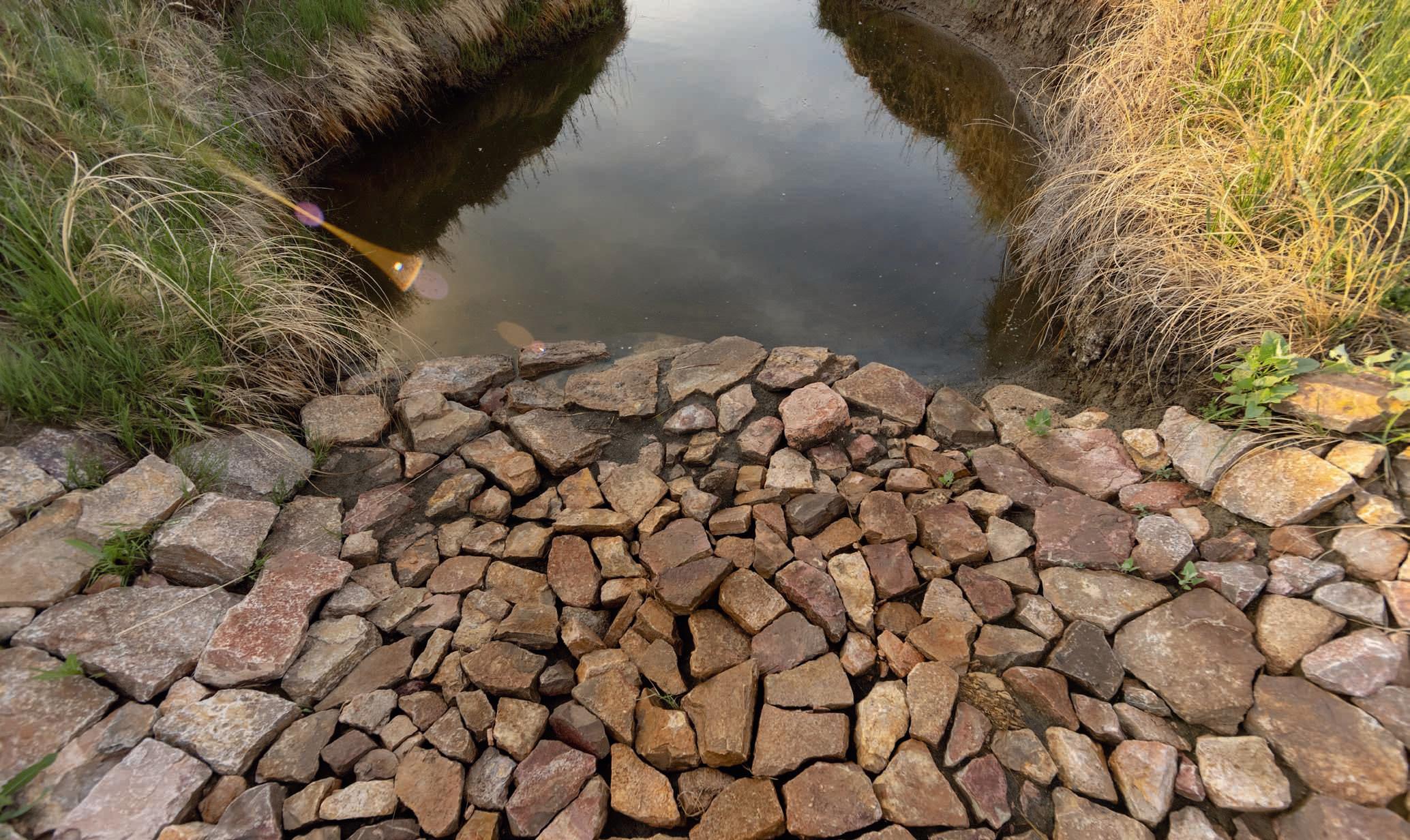

Steve Barnett
General Manager of the South Dakota Rural Electric Association, a statewide association that represents 31 member-owned electric cooperatives. He previously served as Secretary of State for South Dakota.
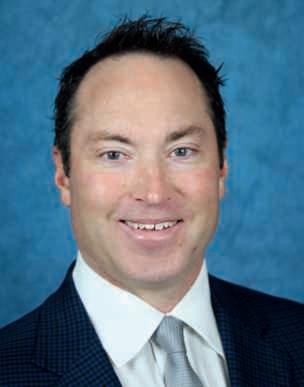
Jim Matheson
CEO of the National Rural Electric Cooperative Association, the national trade association that represents the nation’s more than 900 not-forprofit, consumer owned electric cooperatives. He previously served seven terms as a U.S. representative for Utah.
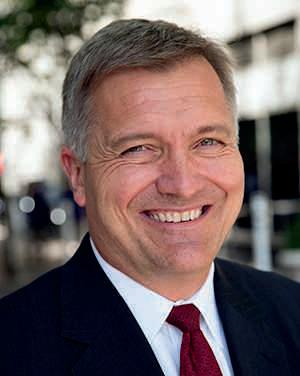
South Dakota’s families and businesses rightfully expect their lights to stay on at a price they can afford. Our national energy policies should support our cooperative mission, which is to provide safe, reliable, and affordable electricity to our member-owners.
Unfortunately, our country is now confronted with a harsh reality – we are quickly approaching a point where there won’t be enough electricity to go around.
The North American Electric Reliability Corporation (NERC) is the nation’s grid watchdog. For years, the organization has issued a string of increasingly dire reports warning that threats to grid reliability are mounting, and more frequent rolling blackouts could soon become the norm. NERC’s recent assessment predicts more than 110 gigawatts of always-available generation, enough to power about 35 million homes, will retire through 2033.
And all or parts of 19 states are at high risk of rolling blackouts during normal peak conditions over the next five years. Keeping the lights on is not a partisan issue. Yet, politics and energy policy have had an outsized impact on how we got here. The current state of our nation’s energy policy related to electricity can be summed up simply: Do more with less.
That’s just not sustainable. From data centers to EVs, from home heating and cooling to the way we run America’s farms, our nation is increasingly reliant on electricity to power the economy. As technology and energy demands advance, a recipe for rolling brownouts and blackouts is brewing.
Opposite that increasing demand for electricity is an alarming reduction in supply as our country shutters existing always-available power plants to comply with various federal and state regulations.
South Dakota experiences extreme weather conditions throughout the year with temperatures rising above 100 degrees in the summer and falling far below zero in the winter. When the sun is not shining and the wind is not blowing, renewable energy sources do not fit the bill for reliability. We simply cannot fully retire power plants that still have a useful life ahead of them.
The final challenge to meeting our nation’s energy needs is the arcane set of rules and regulations required to build anything in this country. The process for siting, permitting and building infrastructure – everything from solar farms, to pipelines to transmission lines – is mired in red tape and years of litigation.
These trends are not going to get any better in the coming years.
On April 25, the Environmental Protection Agency (EPA) finalized four new rules to regulate power plants. The path outlined by the EPA is unrealistic, unachievable, and unlawful – exceeding the EPA’s authority and disregarding Supreme Court rulings. It undermines electric reliability and poses grave consequences for an already stressed electric grid.
The American economy can’t succeed without reliable electricity. Smart energy policy recognizes this fundamental truth, while keeping the lights on. This barrage of new EPA rules ignores our nation’s ongoing electric reliability challenges and is the wrong approach at a critical time for our nation’s energy future.
EPA finalized its rule against a backdrop of daunting threats to reliability as electricity demand surges and supply decreases. This will lead directly to more blackouts, higher costs, and uncertainty for America. That’s a dangerous approach to regulation.
The National Rural Electric Cooperative Association filed a lawsuit with the U.S. Court of Appeals for the D.C. Circuit challenging the EPA over its unlawful power plant rule on May 9. This suit points out that the rule goes far beyond what Congress has authorized the agency to do, violates the Clean Air Act and disregards recent Supreme Court rulings. The rule hinges on the widespread adoption of carbon capture and storage – a promising technology that is simply not ready for prime time.
South Dakota’s Attorney General is also one of several dozen that have filed suit against the EPA for similar reasons.
Policymakers cannot overlook the laws of physics or the reality of the current situation. Adding more renewable resources to the nation’s energy portfolio can be part of the solution; however, since the wind doesn’t always blow and the sun doesn’t always shine, our country also needs a robust supply of readily available energy resources to call on at a moment’s notice.
Any long-term solution requires policymakers to recognize the need for time, technology development and new transmission infrastructure. These are essential ingredients for an energy future that prioritizes reliable electricity for all consumers.
Electricity powers industries, businesses, and technology. It fosters economic development vital for medical facilities, ensuring the functioning of life-saving equipment. Reliable power is essential for emergency services, law enforcement, and disaster response efforts. It also fuels innovation by supporting research, development, and deployment of new technologies.
Keeping the lights on is vital to South Dakota’s economy. The stakes are too high to get this wrong.
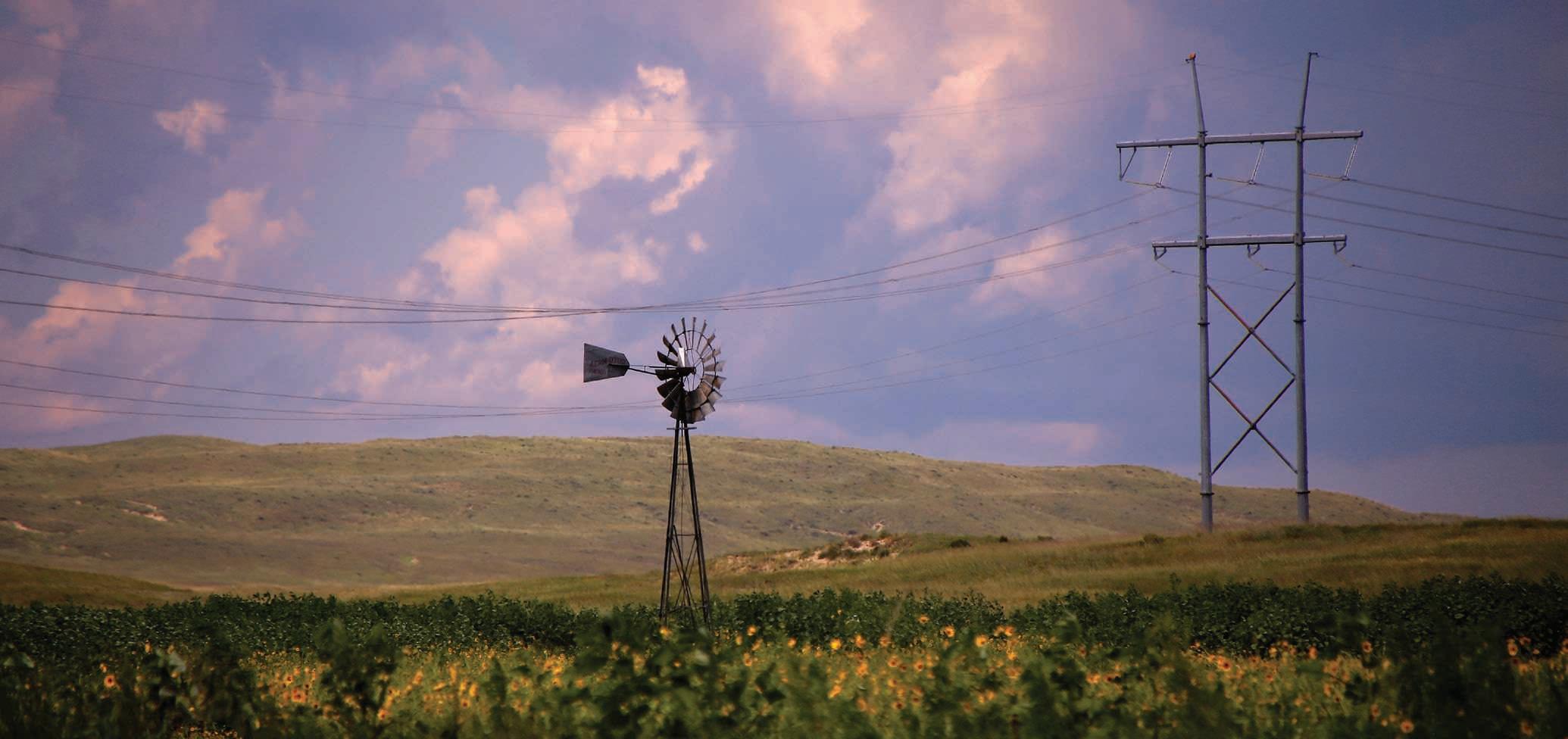
JUNE 12-JULY 20, 2024
Prairie Repertory Theatre
Summer Season
Oscar Larson Performing Arts Center
Brookings, SD
605-688-6045

JUNE 6
2024 AmphiThursday
Summer Concert Series
XTD, 6 p.m
Wakefield, 7 p.m.
Parkston Amphitheater Parkston, SD
JUNE 9
River Honoring
Community Potluck, Live Music & Kids Activities
To have your event listed on this page, send complete information, including date, event, place and contact to your local electric cooperative. Include your name, address and daytime telephone number. Information must be submitted at least eight weeks prior to your event. Please call ahead to confirm date, time and location of event.
4:30-9 p.m.
Clay County Park River Shelter Ethan, SD 605-670-0540
JUNE 13
2024 AmphiThursday Summer Concert Series
Paul Weidenbach, 6 p.m Angie Kriz & the Polkatoons, 7 p.m.
Parkston Amphitheater Parkston, SD
JUNE 14-15
Czech Days 75th Anniversary Tabor, SD taborczechdays.com
JUNE 15-16
Davis Flea Market
9 a.m.-3 p.m. Highway 18 Davis, SD 605-759-3883
JUNE 20
2024 AmphiThursday Summer Concert Series
Todd Keifer, 6 p.m The Hegg Brothers, 7 p.m. Parkston Amphitheater Parkston, SD
JUNE 21
Dalesburg Midsummer Festival: A Celebration of Scandinavian and Rural Heritage
Dalesburg Lutheran Church Vermillion, SD
JUNE 21-23
Scavenger’s Journey Yard sales, farmer’s markets & specialty shops Wall to Wagner www.scavengersjourney.com
JUNE 27
2024 AmphiThursday Summer Concert Series
Two Wheats & a Blonde, 6 p.m
Guilty Pleasures Orchestra, 7 p.m.
Parkston Amphitheater Parkston, SD
JULY 18-21
Danish Days
Danville Heritage Museum Viborg, SD 605-766-1312
JULY 20
S.D. MCC Relief Sale
Food Court, Bake Sale, Live Auction & Silent Auction Free Admission & Parking Pioneer Hall Freeman, SD 605-925-7009
JULY 20-21
Davis Flea Market
9 a.m.-3 p.m. Highway 18 Davis, SD 605-759-3883
AUG. 9
Northern Bull Riding Tour Finals & Bull-a-Rama Geddes, SD 605-680-2763
AUG. 10-11
Fur Trader Days Geddes, SD 605-680-2160
AUG. 17
Yankton Extreme Bull Riding Tour
7 p.m.
Yankton, SD 605-760-2153
Note: Please make sure to call ahead to verify the event is still being held.